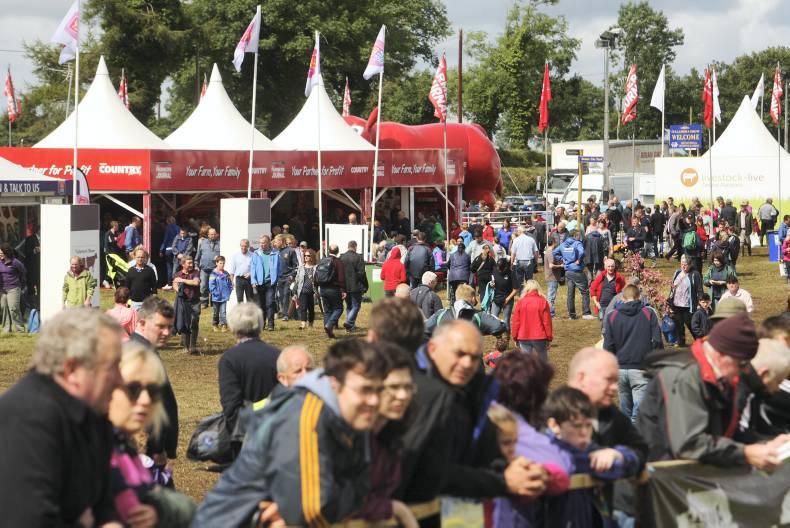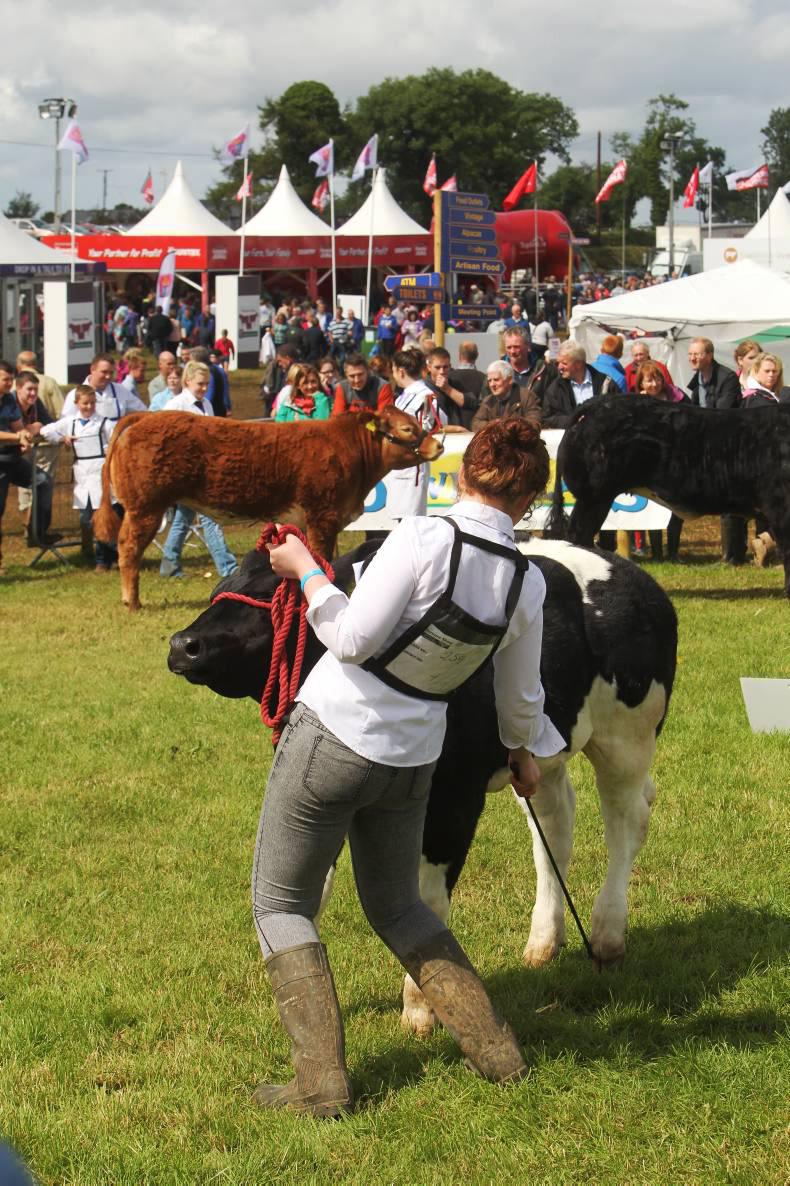Maybe you have an interest in showing cattle but you are not quite sure what it actually entails. If that is the case, make sure to pencil in a visit to one of the demos at the Irish Farmers Journal stand at the National Livestock Show in Tullamore.
Each demo will give a detailed account on how to show and handle a beef animal, a dairy animal and sheep in the ring. We will bring a number of prepared animals into the ring with young people at the halter and we will go through everything from the dress code of the handler, to holding the halter, to getting the animal to stand.
The phenomenon of showing cattle and sheep has exploded among young people all over the country. It’s wonderful to see the next generation of young farming enthusiasts, – who are already extremely knowledgeable in their respective fields – express a keen interest in livestock. Maybe you are 10 or 12 years old and would like to start showing cattle yourself. Or maybe you are a new breeder or a mature first-time exhibitor and would like to learn more about the art of showing.
We will start at the beginning from when you first enter the ring and bring you through the entire procedure that follows right up to the lineup of prize winners. Even youngsters and adults who show animals regularly might still pick up a tip or two.
In a young handler competition, dress code is essential and it’s not the same across the board. The dress code for beef is different to that for dairy. Equally, the handling and showing of a beef animal is completely different to showing a dairy heifer. This also applies to sheep. We will endeavour to showcase the handling techniques and requirements for beef, dairy and sheep by bringing prepared animals into the ring and going through the various stages and elements. Just in case you can’t take it all in, the Irish Farmers Journal will be handing out a leaflet with all the tips for handling and showing on it.
When judging a beef animal, the judge is looking for good conformation, good length, feet and legs, a nice head, wide shoulder, style, class, etc. The criterion is more objective.
In contrast, the judging of a young handler’s class is a subjective task. It’s that judge’s opinion on that particular day. Judges differ. Some will put a lot of emphasis on handling ability, while others might focus more on general knowledge of the animal/farming. Some judges will closely monitor those handlers who are alert at all times and not talking to their friends around the ring, while others are happy just to have the attention of the handler when they are being spoken to. There are basic guidelines which you can follow, but there is no set formula. The art of showing is not an exact science. It’s an inherent skill that distinguishes the best from the exceptional, which can only be seen in the eye of the beholder – the judge.
The demos are scheduled to take place from 11am. There will be a young handlers’ masterclass at 1pm. All those who attend this class will receive a certificate.
For a chance to take part, please fill in the form below.
Getting on track for optimum breeding
The last two breeding seasons have reaffirmed a key breeding message. This is having ewes in optimum body condition and ensuring that their nutritional demands are adequately met in the run up to, during and in the month post-breeding and will deliver huge rewards in increasing ewe litter size.
This does not happen overnight. Advanced planning is required. Breeding preparations will be one of the focal points in the Irish Farmers Journal livestock sheep demonstration at the National Livestock Show in Tullamore on 9 August. Discussions will centre on carrying out a body condition score assessment and putting a plan in place to ensure that ewes are in prime condition for breeding. Ewes in varying body condition will be present and there will be opportunities for farmers to familiarise themselves with the technique, along with gaining advice on feeding and grassland management from the pre-breeding period to the first month of pregnancy.
A further element of the demonstration will be advice on selecting suitable replacements and adopting the optimum replacement strategy for your farm. This will include a demonstration of ewe lambs and ewe hoggets and critical points to address for three replacement strategies – breeding from ewe lambs, purchasing ewe hogget replacements and purchasing/retaining ewe lambs and running dry in their first season.
This section will also incorporate advice and tips to attract high levels of competition and achieve the maximum sale price and also what to look out for if purchasing.
Darren Carty
Weanling management
With weaning strategies set in motion in early spring-calving herds and only weeks to go before we enter the peak weanling sales period, the Irish Farmers Journal livestock beef demonstration is ideally timed.
The demo will deliver practical advice on optimum weaning strategies, feeding management pre- and post-weaning and advice on getting animals looking their best for the autumn sales. Maintaining daily liveweight gain and keeping stress to a minimum is central in minimising any setback in performance and it is equally important in preventing health issues.
The demonstration will explore a number of weaning strategies that can be employed and the merits of each.
The removal of milk from the diet represents two challenges – a significant change in an animal’s nutritional intake and the effect of breaking the maternal bond between the cow and calf.
Targeted use of creep feeding will deliver benefits in reducing the effect of this transitional change and ensure daily liveweight targets are not compromised.
The demonstration will address recommended feeding levels and durations for different categories of weanlings and also advice on feeding programmes for preparation of weanlings for sale.
Darren Carty






 This is a subscriber-only article
This is a subscriber-only article






SHARING OPTIONS: